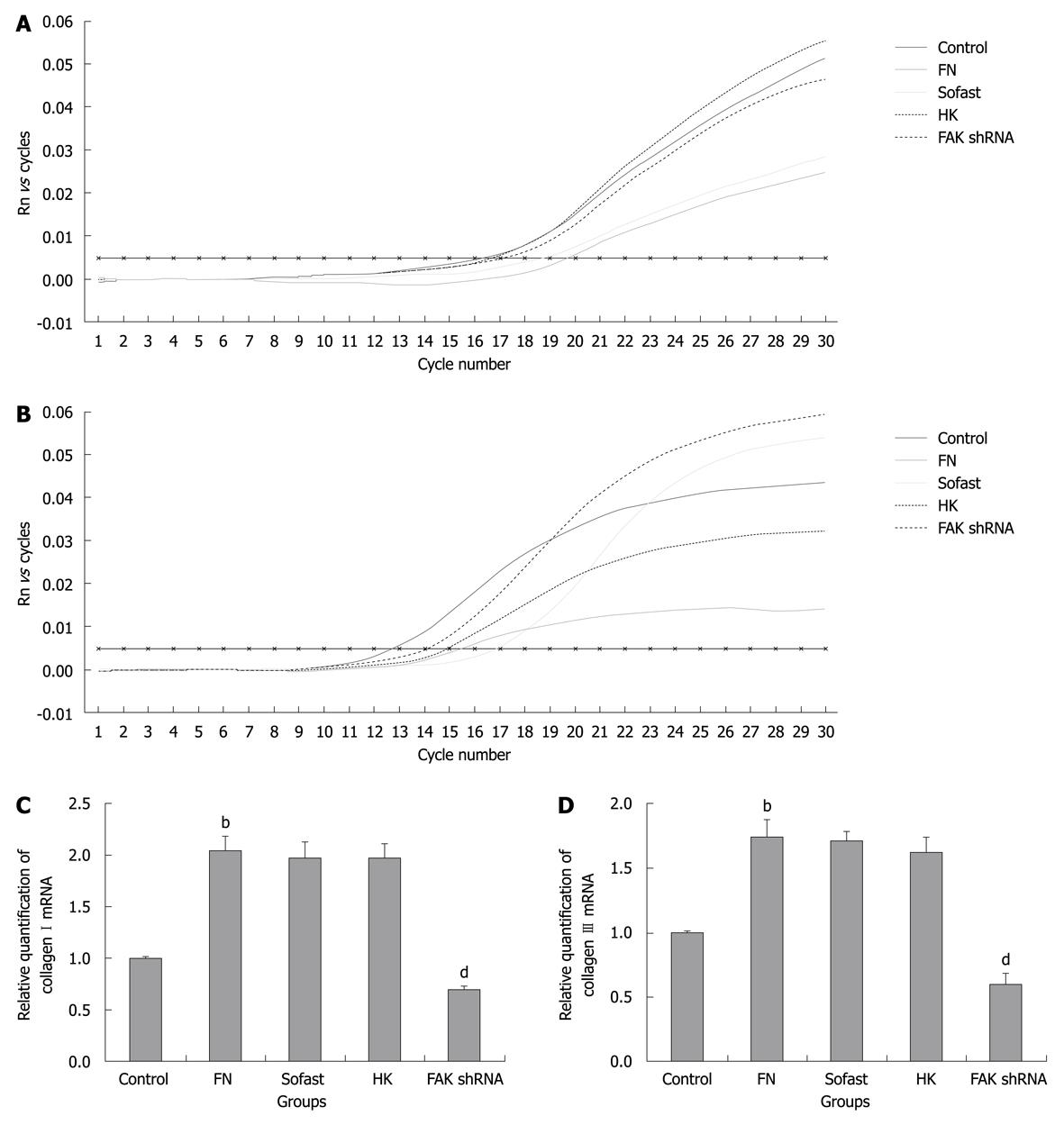Copyright
©2010 Baishideng Publishing Group Co.
World J Gastroenterol. Aug 28, 2010; 16(32): 4100-4106
Published online Aug 28, 2010. doi: 10.3748/wjg.v16.i32.4100
Published online Aug 28, 2010. doi: 10.3748/wjg.v16.i32.4100
Figure 2 Focal adhesion kinase short hairpin RNA selectively inhibited the expressions of collagen I mRNA and collagen III mRNA in hepatic stellate cells after focal adhesion kinase short hairpin RNA transfection.
A, B: Real-time polymerase chain reaction SYBR Green I fluorescence history vs cycle number of target gene 1 (collagen I, A) and target gene 2 (collagen III, B) in sample cDNA. The cycle threshold (Ct) is shown by the darker horizontal line; C, D: The relative quantification of collagen I mRNA (C) and collagen III mRNA (D) are calculated according to 2-ΔΔC(t), [ΔΔCt = (CtCollagen I or III - CtGAPDH) experimental group - (CtCollagen I or III - CtGAPDH) control group] and shown in the bar graphs (n = 3, bP < 0.01 vs control, dP < 0.01 vs HK). It showed that the levels of type I collagen and type III collagen mRNA transcripts in fibronectin (FN) group was significantly higher than in the control group. FAK: Focal adhesion kinase; shRNA: Short hairpin RNA.
-
Citation: Dun ZN, Zhang XL, An JY, Zheng LB, Barrett R, Xie SR. Specific shRNA targeting of
FAK influenced collagen metabolism in rat hepatic stellate cells. World J Gastroenterol 2010; 16(32): 4100-4106 - URL: https://www.wjgnet.com/1007-9327/full/v16/i32/4100.htm
- DOI: https://dx.doi.org/10.3748/wjg.v16.i32.4100









